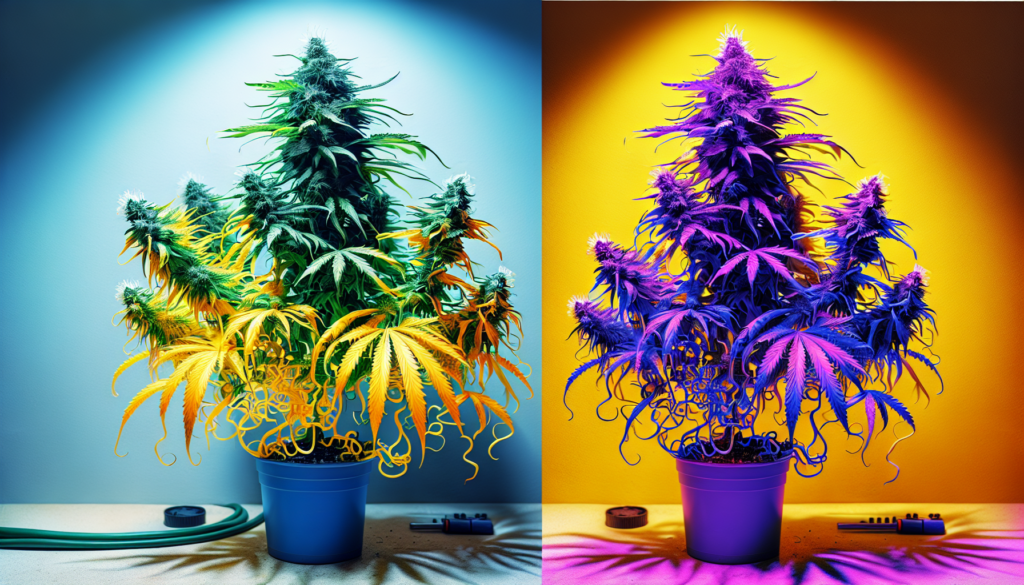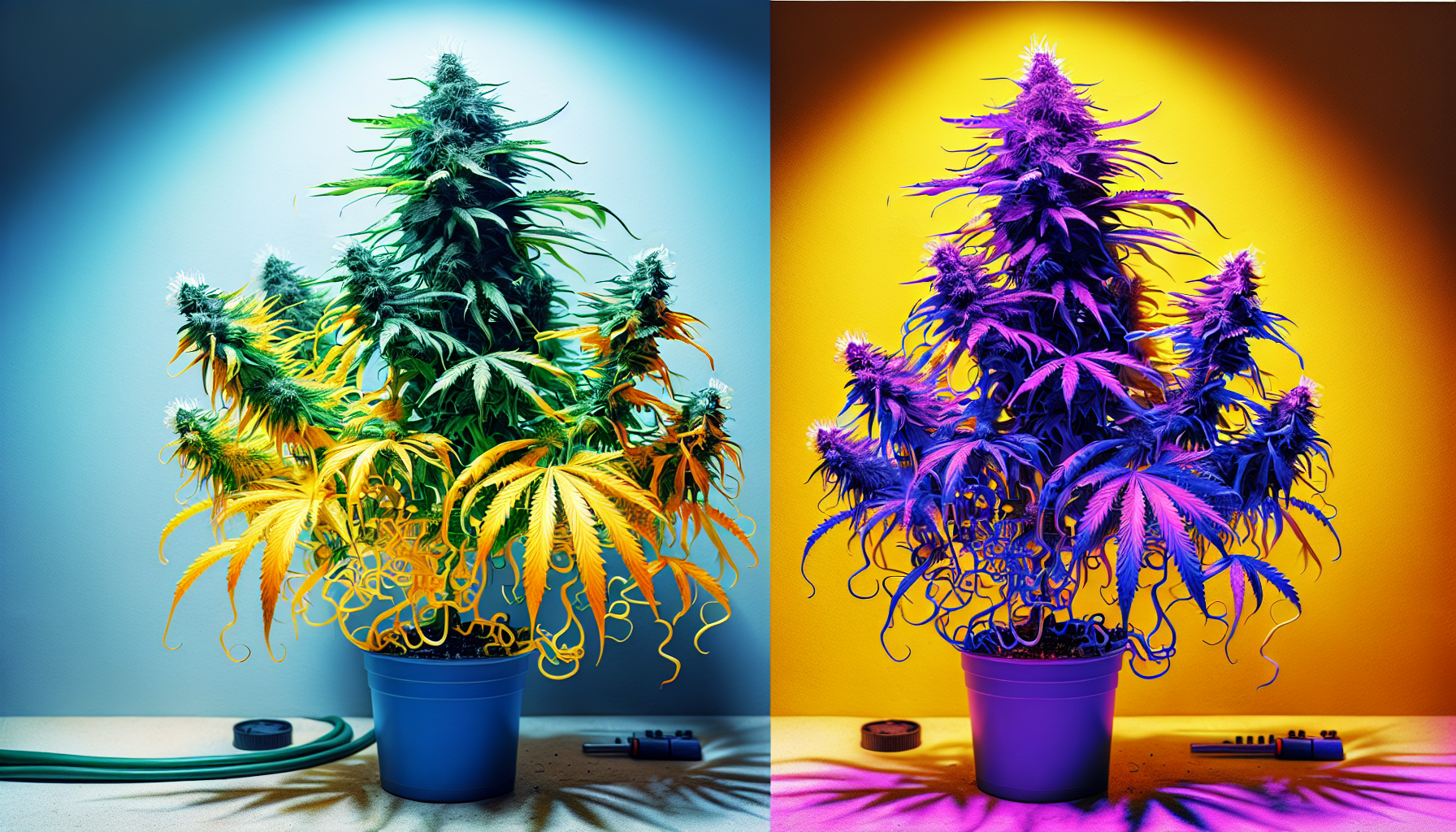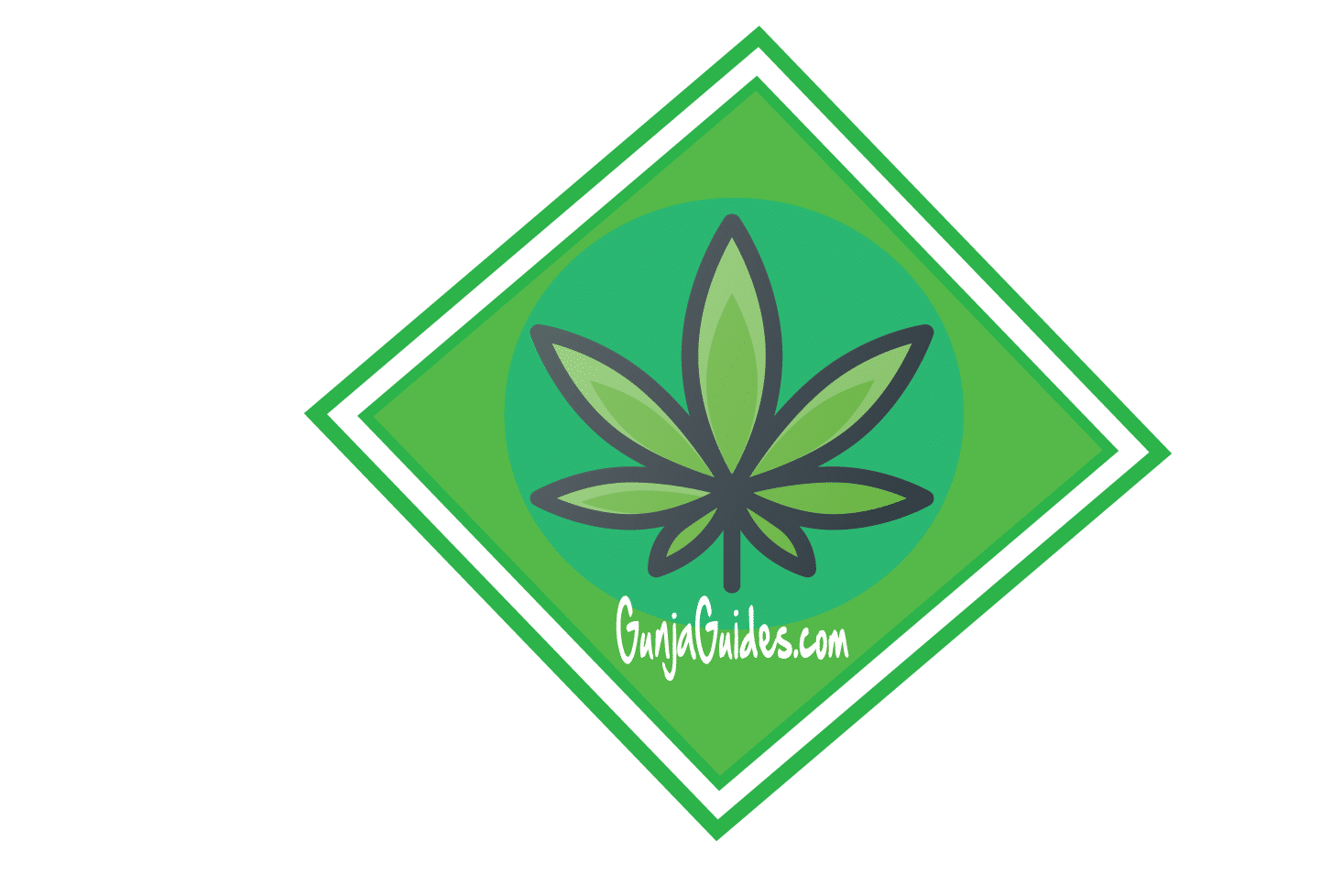What Is Cannabis Light Burn?

What Is Cannabis Light Burn?
Imagine tending to your cannabis plants, expecting them to thrive under those bright lights, only to notice some discolored, crispy leaves that just don’t look right. Well, you might be dealing with a pesky issue known as light burn. Cannabis light burn happens when your plants get more light intensity than they can handle, and trust me, it’s not a tan they’re after. Without the right balance, those powerful grow lights can do more harm than good, leaving your lovely greens in a not-so-enviable state. So, let’s unfold the mystery behind this glow-induced affliction and learn how to keep your cannabis happy and healthy.
Understanding Cannabis Light Burn
Definition of Light Burn in Cannabis Cultivation
You might have heard the term “light burn” in cannabis cultivation conversations or forums. Simply put, light burn occurs when your beloved cannabis plants receive too much light—or more specifically, too much light intensity. This can stress out your plants and ultimately disrupt their growth. Unlike sunburn in humans, light burn in plants is not about UV damage; it’s about radiation intensity overwhelming the plant’s photosynthesis mechanisms.
Differentiating Light Burn from Nutrient Deficiencies
As a grower, you might find it a bit tricky at first to tell the difference between light burn and nutrient deficiencies. They can sometimes display similar symptoms, making it all the more important for you to become a bit of a plant detective. While nutrient deficiencies often cause discoloration or spots on leaves, light burn generally results in a more consistent yellowing or bleaching across the plant’s foliage that’s most exposed to the intense light.
The Importance of Correct Lighting for Cannabis Plants
Proper lighting is everything! Your cannabis plants thrive with the right balance of light—a crucial component for photosynthesis. However, there’s such a thing as too much of a good thing. Overexposing your plants to intense light can damage the delicate tissues that process sunlight and convert it into the energy and nutrients they need to grow. The key is to provide your plants with lighting that supports their growth without pushing them into a light-burnt state of despair.
Causes of Cannabis Light Burn
Excessive Light Intensity
Imagine staring into a excessively bright light—that’s how your plants feel under excessive light intensity. This can happen when the lights used are too powerful for the grow space, or when they’re dialed up too high. High-intensity discharge (HID) lights and even LEDs, if not managed properly, can be the main culprits here.
Improper Distance Between Lights and Plants
Picture this: Your plants are basking under grow lights, but those lights are just too close for comfort. The right distance is crucial because it allows light to spread evenly and not focus too intensely on one area. When lights are placed too close, they can cause your plants to essentially get a “lightburn.”
Inadequate Light Spectrum Adjustment
You know that different stages of growth require different light spectrums—like blue for vegging and red for flowering. A common oversight by growers is not adjusting the light spectrum to meet these changing needs. Failure to do so can lead to light stress and, you guessed it, light burn.
Reflective Materials and Light Concentration
You’ve probably used reflective materials to maximize light efficiency. While they’re great for ensuring your plants get all the rays they need, these materials can also inadvertently focus light too intensely if not used correctly, leading to localized areas of high light intensity and potential for light burn.
Identifying Light Burn Symptoms
Discoloration of Leaves
One of the first things you might notice when your plants are suffering from light burn is the leaves changing color. The uppermost leaves, those closest to the light source, typically turn yellow or pale, indicating that they’re getting more light than they can handle.
Leaf Curling and Wilting
Another telltale sign is the leaves curling up at the edges or wilting, almost as if they’re trying to shield themselves from the intense light. This is your plant’s version of squinting to avoid the glare; it’s a defensive move.
Bleached or White Patches on Leaves
When you observe your plants, you might see what looks like sun-bleached patches or spots, particularly on the leaves directly under the light. These white or very light-colored areas are where the light has been so intense that it’s actually begun to destroy the chlorophyll in the leaves.
Comparing Symptoms to Other Plant Stressors
Don’t jump to conclusions! Make sure you’re comparing symptoms to other plant stressors like water, temperature, pests, or diseases. It’s all about context and patterns—light burn will typically present most prominently on the top leaves that are closest to your light source.

Preventing Light Burn in Your Cannabis Grow
Choosing the Right Lights for Your Setup
You need to play Goldilocks here—find lighting that’s just right, not too weak and not too strong for your grow space. Do your homework on different types of lights and how they perform in various setups. Remember, what works for your friend’s grow tent might not suit yours.
Understanding Light Requirements for Different Growth Stages
You know that plants in vegetative state love light, but that doesn’t mean you blast them with as much intensity as possible. Gradually increasing light intensity as they grow helps acclimate your plants and prevents stress. And let’s not forget the different needs during the flowering stage.
Utilizing Proper Light Height and Positioning
Time to break out the tape measure and make sure your lights are positioned at the ideal distance from your plants. Use the manufacturer’s guidelines as a starting point, and adjust based on the size and growth stage of your plants.
Implementing Light Schedules and Intensity Cycles
Just like you, plants need a good night’s rest. Implement a photoperiod—on and off light cycles—that mimics natural daylight hours. Some growers also use dimmable lights to simulate the gradual increase and decrease of sunlight intensity throughout the day.
The Role of Grow Room Environment
Temperature and Humidity Factor
Your grow room isn’t just about the lights; it’s also about managing the environmental duo—temperature and humidity. Maintaining a balanced grow room environment is critical in preventing light burn, as extreme temperatures can enhance the stress caused by too much light.
Ventilation and Air Circulation
Good air circulation is like a fresh breeze for your plants—it helps regulate temperature and prevents hot spots that can contribute to light burn. Make sure your fans are strategically placed and that fresh, cool air is circulating throughout your grow room.
Minimizing Hotspots with Even Light Distribution
Hotspots are to plants what sunbathing without sunscreen is for you—a bad idea. Use reflective materials correctly, and ensure your lights are evenly distributing the love so that all your plants get an equal opportunity to flourish without getting scorched.
Regular Monitoring and Environmental Controls
Stay on top of your grow room by monitoring regularly. Use environmental controls to keep an eye on things, and don’t be afraid to make adjustments to ensure your plants are living their best life.
Diagnosing Light Burn in Cannabis Plants
Observation and Early Detection
Keep those peepers peeled! Regular observation is key to catching light burn early. Look for subtle changes in leaf coloration and structure, especially in the uppermost canopy areas closest to your lights.
Documentation and Analysis of Symptoms
Start a grow journal if you haven’t already. Document symptoms, changes in your setup, and adjustments you’ve made. This will help you analyze patterns and identify the root cause of issues like light burn.
Understanding the Growth Stage Impact on Light Sensitivity
Be aware of how light sensitivity changes at different growth stages. Seedlings and young plants are particularly vulnerable, so ease them into higher light levels as they mature.
Consulting with Cultivation Experts
Sometimes you need to call in the cavalry. Don’t be shy about reaching out to cultivation experts who can offer experience-based advice to help diagnose and treat light burn.
Treatment and Recovery from Light Burn
Adjusting Light Intensity and Position
When you’ve confirmed light burn, it’s time to take action. Adjust your light intensity, raise the height of your lights, or decrease your light hours. Give your plants a break to help them recover.
Implementing Recovery Techniques
Help your plants recover by ensuring they’re getting exactly what they need—no more, no less. This could mean tweaking nutrients or water intake, as their needs may change while recovering from light burn.
Monitoring Plant Recovery Progress
Stay diligent and keep an eye on your plants as they recover. Look for new growth and the return of healthy green coloring. This will indicate that your intervention is working and your plants are bouncing back.
Dealing with Persistent or Severe Symptoms
If your plants aren’t showing signs of recovery, you may need to take further action. This could involve more serious measures like pruning damaged leaves or adjusting your overall grow strategy.
Advanced Techniques to Control Light Exposure
Automated Light-Dimming Systems
Technology is your friend. Consider investing in automated light-dimming systems that can adjust light intensity for you, providing a more consistent environment for your plants.
The Use of Supplemental Lighting
Sometimes, supplementing your primary light with additional sources can alleviate high-intensity focus and support a balanced light distribution—think of it as a supporting actor taking some of the pressure off the star of the show.
Training Plants to Optimize Light Absorption
Get hands-on with your plants! Techniques like Low Stress Training (LST) or Screen of Green (SCROG) can help create a more even canopy, so each part of your plant gets its fair share of the spotlight.
Using UV and Far-Red Light to Mitigate Stress
Some growers use UV and far-red light to boost stress tolerance in their plants. This advanced strategy can enhance resilience, but it’s not a beginner move—so make sure you do your research before diving in.
Common Misconceptions About Light Burn
Myth vs. Reality in Light Burn Appearance
It’s easy to make assumptions about light burn based on weed lore, but always rely on research and observed symptoms rather than hearsay. Light burn doesn’t always look the same in every case.
Overestimating Light Requirements for Cannabis
There’s a myth that more light always equals better yields. But balance is key; more isn’t always better. Understand the limits of your strain and setup, and provide the right amount of light for optimal growth without going overboard.
Confusing Light Burn with Pathogen or Pest Damage
Some might mistake light burn for damage caused by pathogens or pests. Keep in mind the location—light burn is usually at the top of the canopy, where pests and diseases often start at the bottom.
Misinterpretation of Plant Recovery Signs
Be cautious in defining recovery. New growth is a good sign, but assess the overall health of your plant, not just isolated improvements, to understand the full picture.
Educational Resources and Support for Growers
Online Communities and Forums for Cannabis Cultivators
Embrace the knowledge of the hive mind and check out online communities and forums. They’re treasure troves for grower tips, troubleshooting, and advice from fellow cultivators who have faced similar challenges.
Workshops and Training Sessions on Lighting Management
Stay sharp by attending workshops and training sessions. The more you know about lighting management and its nuances, the better you can prevent or address light burn.
Books and Guides on Advanced Cannabis Horticulture
Build your library! There are countless books and guides dedicated to advanced cannabis horticulture that can teach you about all aspects of growing, including how to manage light burn.
Professional Consulting Services for Grow Operations
If you’re serious about your grow operation and want personalized advice, consider consulting services. Professionals can offer tailored solutions to enhance your grow and prevent light burn.
Staying informed, vigilant, and responsive will make you a pro at preventing, identifying, and treating light burn, keeping your cannabis plants happy and healthy through every stage of their growth.


